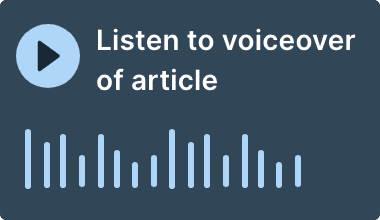The month under review has carried over the trends that emerged in the closing months of 2022. According to these, voices have grown louder and louder that “markets are wrong”. From the depths of bearishness during October of last year to the foot-stamping at the inherent strength of bond, and to a certain degree stock, markets this year, most commentators, observers, and investors have sung from the same hymn sheet. That hymn sheet dictates that markets should pay heed to persistent hawkishness from central bankers across the board rather than spinning their own yarn. One prominent commentator even goes so far as to venture that it is computers and algorithms, not human brains, that spur bond prices. For this same commentator, the current, surprising obstinacy of bond prices to adopt the path of least resistance, which is downwards, is an aberration waiting to be corrected. Abnormally high levels of bond price volatility are also seen as evidence of prices not reflecting the true picture of the underlying economy.
When inflation began rising, some two years ago, most investors believed this to be transitory. This group included leading central banks, high-profile investment gurus and mainstream investors, and formed the majority of interested parties, this author included. Today, as non-core inflation has continued on the downward path it has followed for the past 12 months or so, the focus of these observers is on the stubborn stickiness of core inflation. The result has been that most such gurus, observers and investors (as well as leading central bankers) have changed their minds and their tune. They no longer view inflation as transitory. Instead, they opine, inflation at a level above the tolerance threshold of central banks, is here to stay for the foreseeable future. The result is that interest rates will stay “higher for longer”.
There are several important reasons for this scenario change. Freezing Russian assets and reducing western dependence on the country’s vast supply of raw materials following the Ukraine war triggered these shifts. The overreliance on Chinese-based supply chains has become a problem, not the efficient solution it used to represent. Other reasons predominantly include the perceived death of globalisation, in which security overrides prosperity as supply chains are disentangled and offshoring gives way to onshoring or, at the very least, friend-shoring. The US president’s continuation of his predecessor’s inclination towards selective protectionism, as well as his inflationary Inflation Reduction Act and his CHIPS Act, have all caused outcries abroad. Added to that is the clampdown on the use of Chinese technologies. All this will impede economic growth and corporate margins. It will also pit Eastern disinflation from overcapacity, against Western inflation from under capacity.
The increased vociferousness with which China’s commercial strength is propagated around the world is another leading influence, as other economies, notably Western ones, balk at China’s bully-boy tactics and look for trade and business avenues not so reliant on the Middle Kingdom. As a result, reducing globalisation risks placing a floor under inflation rates in advanced economies that could even represent the “new normal” in their central banks’ tolerance level.
Growing signs exist of hostile countries like China, India or Brazil attempting to undermine the US dollar’s safe haven and trading status, with Russia’s help and encouragement. Is it the beginning of the end of the western trading, as well as payments, system and is the Renminbi poised to become the world’s leading reserve currency? The loud noise surrounding this theory distracts from the fact that a reserve currency must not only be an established unit of account, a store of value and a means of exchange. It must also be freely floating and fully convertible, backed by a large, liquid and open international sovereign bond market, as well as representing a leading share amongst other competing reserve currencies such as the Euro or the Yen. Furthermore the country in question needs to run a long-term policy of current account surpluses.And, not least, it requires the absence of a Communist Party controlling its economy. It is thus most importantly a matter of trust and confidence.
The changing path of least resistance
Bank runs (as well as profit warnings and rights issues) are like cockroaches. The first one is inevitably followed by a second, a third and a fourth. There is nothing new in this phenomenon and the month under review presented further evidence thereof. As depositors withdrew their funds from banks, the monies found their way back into the market in various forms – but outside the primary banking system. Sovereign bonds, considered the least risky default position at the end of the day, have showed that for such bond prices the path of least resistance is, in fact, upwards. This has been to the consternation of those aforementioned observers, who expected the price of money to be pointing upwards, inexorably, and thereby harming share prices. The US corporate earnings season is expected to be weak and cause even more share price declines.
This is where the Quality Growth investor can once again realise that the established wisdom, whereby a superior investment return requires the adoption of high risk, is deeply flawed. Some few months ago, rising interest rates were expected to produce strong bank share prices as these institutions enjoyed expanded net interest margins. For many investors this was a no-brainer. The reality proved to be a rude awakening as it produced a swift, brutal and permanent loss of capital to punters allured by the perceived momentum of rising bank share prices.
For Quality Growth investors the background has been altogether different. Despite the hardship of the last two years for their share prices, true Quality Growth businesses have enjoyed superior corporate returns, quarter after quarter. With balance sheets largely or wholly free from net debt, coupled with above-average earnings growth, such businesses clearly represent lesser risk. And as earnings drive share prices, investors in Quality Growth enterprises have seen superior share price returns as bond yields seem to have found their new levels.
Established wisdom has once again been turned on its head.
This is a marketing communication / financial promotion that is intended for information purposes only. Any forecasts, opinions, goals, strategies, outlooks and or estimates and expectations or other non-historical commentary contained herein or expressed in this document are based on current forecasts, opinions and or estimates and expectations only, and are considered “forward looking statements”. Forward-looking statements are subject to risks and uncertainties that may cause actual future results to be different from expectations.
Nothing contained herein is a recommendation or an offer or solicitation for the purchase or sale of any financial instrument. The material is not intended to provide, and should not be relied on for, accounting, legal or tax advice, or investment advice. The content and any data services and information available from public sources used in the creation of this communication are believed to be reliable but no assurances or warranties are given. No responsibility or liability shall be accepted for amending, correcting, or updating any information contained herein.
Please be aware that past performance should not be seen as an indication of future performance. The value of any investments and or financial instruments included in this website and the income derived from them may fluctuate and investors may not receive back the amount originally invested. In addition, currency movements may also cause the value of investments to rise or fall.
This content is not intended for use by U.S. Persons. It may be used by branches or agencies of banks or insurance companies organised and/or regulated under U.S. federal or state law, acting on behalf of or distributing to non-U.S. Persons. This material must not be further distributed to clients of such branches or agencies or to the general public.
Get the latest insights & events direct to your inbox
"*" indicates required fields





